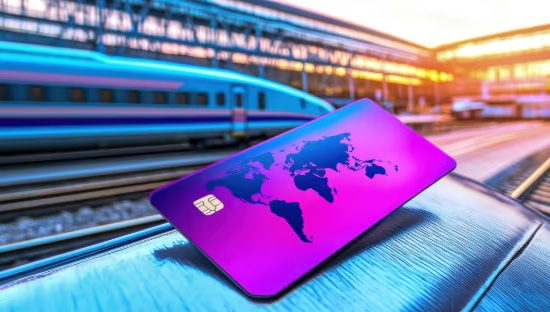
How Does International Roaming Work? A Simple Guide for Travelers
Picture this: you’re on a dreamy vacation in Paris, snapping photos of the Eiffel Tower, and suddenly you get a text from your mobile provider. It’s about international roaming, and it comes with a cryptic warning: “You are now roaming. Charges may apply.” But what does that really mean? How does international roaming work, and why does it sometimes cost an arm and a leg?
Let’s break it down.
What Is International Roaming?
In its simplest form, international roaming allows you to use your home mobile number when traveling abroad. It’s like borrowing another country’s network to make calls, send texts, or browse the internet. Instead of losing connectivity as soon as you step off the plane, your phone piggybacks on a local carrier’s network.
Think of it like visiting a friend’s house and using their Wi-Fi password. The network isn’t yours, but you’re allowed to use it temporarily—except in this case, your mobile provider will charge you for the privilege.
How Does International Roaming Actually Work?
Here’s a step-by-step look at what happens when you use your phone internationally:
- Your Phone Connects to a Foreign Network When you land in another country, your phone searches for a compatible network. For example, if you’re a Verizon user traveling to Italy, your phone might automatically connect to Vodafone Italy or TIM, depending on which carrier Verizon has an agreement with.
- Carrier Agreements Come Into Play Mobile providers don’t own networks in every country. Instead, they make deals with international carriers to “rent” their network infrastructure. These agreements determine how much they’ll charge each other for your usage—and ultimately how much you’ll pay.
- Billing and Data Transfer Every time you use your phone abroad, the foreign carrier logs your activity (calls, texts, and data) and reports it back to your home provider. Your provider then calculates your charges based on their roaming rates. Sometimes these rates are bundled into a daily or monthly roaming plan; other times, they’re charged piecemeal.
Why Is Roaming So Expensive?
If you’ve ever been shocked by your phone bill after an international trip, you’re not alone. Roaming fees are infamous for being outrageously high. But why?
- Network Usage Fees Foreign carriers charge your home provider for letting you use their network. These costs are often passed directly to you.
- No Standard Rates There’s no universal pricing model for roaming. Every agreement is different, and costs vary depending on the country, carrier, and type of usage (e.g., data is often pricier than calls).
- Hidden Costs Some providers tack on additional fees for administrative or handling purposes, making the final bill even steeper.
- Lack of Transparency Many travelers aren’t aware of how much roaming costs until it’s too late. Without clear upfront pricing, it’s easy to rack up charges without realizing it.
Types of Roaming Services
International roaming isn’t one-size-fits-all. Here are the main types of roaming services you might encounter:
- Voice Roaming This covers making and receiving calls. Keep in mind that even incoming calls can cost you when you’re abroad!
- Text Roaming Sending SMS messages while roaming is usually less expensive than making calls, but it can still add up, especially if you’re texting frequently.
- Data Roaming This is the big one. Using mobile data for browsing, streaming, or checking Google Maps can quickly burn through your budget if you’re not careful. Data roaming is often priced per megabyte (MB), which can make it shockingly expensive.
The Role of Roaming Packages
To help avoid sky-high costs, many mobile providers offer roaming packages. These plans typically include a set amount of calls, texts, or data for a flat fee. Here are some common types of packages:
- Daily Roaming Passes You pay a daily fee (e.g., $10 per day) to use your phone abroad just as you would at home. These are great for short trips but can get pricey for longer stays.
- Monthly Travel Plans For longer trips, some carriers offer monthly plans with larger data allowances.
- Pay-As-You-Go If you don’t purchase a package, you’ll be charged standard roaming rates, which are often the most expensive option.
Alternatives to International Roaming
If the thought of roaming charges makes you break out in a cold sweat, don’t worry. There are plenty of alternatives to help you stay connected without blowing your budget:
- Local SIM Cards One of the cheapest options is to buy a local SIM card when you arrive at your destination. This gives you access to local rates for calls, texts, and data. However, you’ll need an unlocked phone for this to work.
- eSIMs An eSIM is a digital SIM that allows you to switch to a local carrier without physically changing your SIM card. eSIMs are becoming increasingly popular because they’re easy to set up and often come with competitive rates.
- Wi-Fi Relying on Wi-Fi for internet access is a no-cost option. Just make sure to download offline maps and messaging apps that work over Wi-Fi (like WhatsApp or iMessage) before your trip.
- Global SIM Cards These are designed specifically for international travelers and offer flat rates across multiple countries. They’re a good option for frequent travelers who don’t want the hassle of buying a new SIM card in every country.
How to Avoid Roaming Nightmares
If you decide to use international roaming, follow these tips to keep costs under control:
- Check Your Plan Before You Travel Contact your provider to learn about their roaming rates and packages. Some providers offer free or discounted roaming in certain countries.
- Turn Off Data Roaming To avoid surprise charges, disable data roaming in your phone’s settings. You can still use Wi-Fi to access the internet.
- Monitor Your Usage Use apps or your phone’s built-in tools to track how much data you’re using.
- Download Offline Content Save maps, music, and videos offline before you travel so you don’t need to use mobile data.
- Switch to a Travel-Friendly Carrier Some carriers specialize in offering affordable roaming options, like Google Fi or T-Mobile’s international plans.
The Future of International Roaming
The good news is that international roaming is getting cheaper and more accessible thanks to evolving technology. eSIMs, in particular, are changing the game by offering seamless, affordable connectivity across borders. Meanwhile, initiatives like the European Union’s “Roam Like at Home” policy have eliminated roaming charges within EU countries, setting a precedent for other regions.
As the world becomes more interconnected, mobile providers are under pressure to offer better roaming options. Until then, being informed and prepared is your best defense against roaming surprises.
Final Thoughts
International roaming might seem complicated, but it’s all about staying connected while you’re away from home. How Does International Roaming Work? Whether you’re calling your family, sharing travel photos, or navigating unfamiliar streets, roaming keeps you linked to the digital world—even in far-off places.
By understanding how it works and exploring alternatives like eSIMs or local SIM cards, you can avoid unnecessary expenses and focus on enjoying your trip. After all, the only thing you should be worrying about on vacation is where to find the best croissant—not your phone bill!










